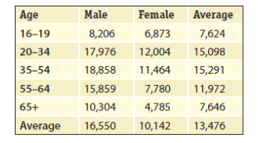Briefly discuss how human activities have affected the balance of global hydrological and carbon cycles
What will be an ideal response?
Human activities have impacted nearly every aspect of the hydrological cycle. Groundwater and aquifer resources have been depleted by urban and agricultural growth. Rivers have been dammed and diverted such that they have slowed and diminished their flow toward the seas. The removal of vegetation from watersheds has increased surface runoff and decreased infiltration and transpiration. Certainly the greatest disruption of the carbon cycle has been the enormous input to the atmosphere of the greenhouse gas carbon dioxide by the burning of fossil fuels. This has been the most important driver of global climate change. In addition, extensive deforestation, particularly in tropical regions, has diminished the ability of these regions to remove carbon dioxide from the atmosphere. Today, the atmospheric carbon dioxide reservoir is greater than it has been in more than 800,000 years.
You might also like to view...
Assume an average fuel economy of 25 miles per gallon, and calculate the amount of CO2 released into the atmosphere by gender and age group. Present your results in a similar tabular form.
The U.S. Federal Highway Administration's recent data regarding the average annual miles driven per driver by age group is shown in the accompanying table.

The polar cell
A) has low pressure centered over the poles resulting in stormy conditions. B) has surface winds out of the west, easterly winds aloft. C) has low pressure centered over land in the northern hemisphere. D) has high pressure centered over land in the southern hemisphere.
Why is the early rock record of the Precambrian rocks more difficult to interpret than the rock
record of the Phanerozoic Eon? What will be an ideal response?
A shield volcano is typically andesitic in composition
Indicate whether the statement is true or false